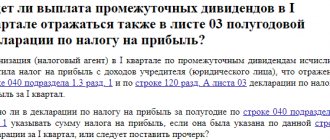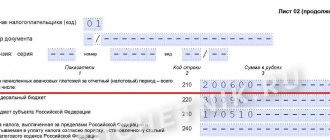General rules for individual entrepreneurs and organizations for calculating income tax
First of all, to calculate income tax, you need to know the size of the tax base. Article 274 of the Tax Code of the Russian Federation defines the tax base as the taxpayer’s profit in monetary terms and proposes the following formula for calculation:
Tax base = Operating and non-operating income - Expenses associated with operating and non-operating income - Losses of reporting (tax) periods of previous years
Not all amounts received and spent can be recognized as income and expenses. There are revenues that are not taken into account at all for the purpose of calculating income tax (Article 251 of the Tax Code of the Russian Federation). Similarly with expenses - some are not accepted at all for tax purposes (Article 270 of the Tax Code of the Russian Federation), and some are accepted only within the limits of the norms. In any case, all expenses must be economically justified, supported by documents and made to further generate income.
The tax base is determined on an accrual basis for the tax period. At the same time, according to clause 8 of Art. 274 of the Tax Code of the Russian Federation, the base can be equal to zero if expenses exceed income in the reporting (tax) period.
Reporting periods for income tax are 1st quarter, half a year, 9 months and a year (clause 2 of Article 285 of the Tax Code of the Russian Federation). This applies to organizations that pay only quarterly payments or quarterly and monthly payments within a quarter.
For taxpayers who calculate advance payments based on actual profits, reporting is provided on a monthly accrual basis - for January, January-February, January-March, and so on until the end of the year (clause 2 of Article 285 of the Tax Code of the Russian Federation). The tax period is equal to the calendar year, based on the results of which organizations calculate income tax. Throughout the year, they pay advance payments in one of three ways:
- quarterly, according to the formula:
Advance payment = Profit since the beginning of the year × Tax rate - Advance payment for the previous quarter
- monthly according to the profit of the previous quarter and quarterly, according to the formula:
Monthly advance payment payable = Quarterly advance payment calculated based on the results of the previous quarter / 3 Quarterly advance payment payable = Cumulative profit for the reporting period × Tax rate - Amount of monthly advance payments payable in the corresponding quarter
- monthly according to actual profit, according to the formula:
Advance payment = Cumulative profit from the beginning of the year × Tax rate - Advance payment for the previous month
The additional tax at the end of the year is calculated using the formula: Amount of tax at the end of the year = Tax base × Interest rate - Advance payments
If the organization pays quarterly and monthly payments, then the advance payment for 9 months and monthly payments for 4 quarters are deducted. If she only pays quarterly payments, she takes away the advance payment for 9 months. If you pay monthly based on actual profits, you only deduct the advance payment for 11 months.
According to Art. 284 of the Tax Code of the Russian Federation, the tax is set at 20%, of which companies in 2021 must transfer 3% to the federal budget and 17% to the regional budget. For some economic entities, for example, for participants in investment projects, a lower regional payment is established.
In a simplified form, an example of calculating income tax for organizations that pay only quarterly payments looks like this:
Example
At the end of the first quarter of 2021, the company received the following data:
- sales income - 2 million rubles;
- non-operating income - 0.2 million rubles;
- expenses associated with sales income - 1.15 million rubles;
- expenses associated with non-operating income - 0.23 million rubles.
The tax base will be 0.82 million rubles. (2 million rubles + 0.2 million rubles – 1.15 million rubles – 0.23 million rubles).
The quarterly tax amount is 0.164 million rubles. (RUB 0.82 million × 20%).
The advance payment is paid by the 28th day of the month following the reporting month or quarter, and the tax at the end of the tax period is paid by March 28 of the following year (Clause 1 of Article 287 of the Tax Code of the Russian Federation). Similar deadlines apply for filing tax returns.
The main feature of the organization of accounting for income tax calculations is the determination of income and expenses that the company can include in the tax base.
Nuances when calculating and taking into account UN
Not all companies resort to using a second-tier account, called the “income tax account”. Firms that have a simplified taxation system or unified agricultural tax do not use it in their work. Legal persons on the simplified tax system can use this account at will. Insurance companies and banks do not use this account, although they have IT and SHE. “State employees” work according to a completely different chart of accounts.
Similar articles
- How to calculate income tax on an accrual basis?
- Conditional income and income tax expense
- Accounting for income tax in an organization
- How to calculate income tax: example
- How to calculate income tax
Organizational expenses for labor costs in income tax calculations
Labor costs constitute the first of four groups of expenses that the Tax Code of the Russian Federation allows to be taken into account in income tax calculations. To such expenses, according to Art. 255, include:
- salary according to the company’s remuneration system;
- incentive and incentive payments;
- compensation related to working conditions;
- the cost of utilities, food, uniforms and shoes;
- other payments provided for by the Tax Code of the Russian Federation.
Please note that the expenses listed above are taken into account when determining income tax only if they are reflected in the employment or collective agreement. Remunerations that are not provided for in contracts and do not directly relate to work activities cannot be accepted as expenses (Clause 21, Article 270 of the Tax Code of the Russian Federation). Payments to employees are recorded both in cash and in kind.
Report your income taxes quickly and easily
Kontur.Extern will help you fill out the declaration and perform calculations.
Before sending the tax document, it will be checked for errors, and then Kontur.Extern will automatically generate a payment invoice for you. Send a request
In addition, according to Art. 252 of the Tax Code of the Russian Federation, taxpayers’ costs for labor must be economically justified and supported by documents.
Certain expenses related to wages are standardized and partially taken into account for tax purposes. For example, the cost of paying VHI contributions together with the cost of providing medical services to employees cannot exceed 6% of the amount of labor costs.
The procedure for recognizing labor costs also has its own peculiarities. If the company uses the cash method, then it takes into account these expenses in the tax base upon payment (clause 3 of Article 273 of the Tax Code of the Russian Federation). When applying the accrual method, direct labor costs are taken into account as the products in the cost of which they are included are sold, and indirect costs are taken into account in the accrual period (clause 2 of Article 318 of the Tax Code of the Russian Federation).
Let's look at an example of how an organization can calculate income tax taking into account information about labor costs.
Example
Let's assume that the company's operating income in the first quarter of 2021 amounted to 950 thousand rubles, non-operating income - 20 thousand rubles.
The company's labor costs for the specified period include:
- wages under employment contracts - 125 thousand rubles;
- compensation related to working conditions - 25 thousand rubles;
- payments for the funded part of pensions and long-term life insurance for employees - 37 thousand rubles;
- additional payments for state awards received outside the work activities of employees and not provided for in employment contracts - 21 thousand rubles.
Other operating expenses amounted to 290 thousand rubles, non-operating expenses - 24 thousand rubles.
Let's determine the tax base.
The total amount of labor costs is 150 thousand rubles. (125 thousand rubles + 25 thousand rubles). The employer has the right to take into account contributions to the funded part of the pension and life insurance in the amount of 18 thousand rubles. (150 thousand rubles × 12%). Additional payments for government awards cannot be taken into account because they are not related to the professional achievements of employees.
The tax base is 488 thousand rubles. (950 thousand rubles + 20 thousand rubles – (290 thousand rubles – 150 thousand rubles – 18 thousand rubles – 24 thousand rubles)).
Let's calculate the amount of income tax.
The tax amount for the reporting period will be 20% of 488 thousand rubles, or 97.6 thousand rubles.
Material expenses of an organization in income tax calculations
Another group of expenses taken into account in income tax calculations are material expenses. This group, according to Art. 254 of the Tax Code of the Russian Federation, includes acquisition costs:
- materials and raw materials that are intended for production needs;
- materials that are spent on product packaging and other household needs;
- inventory, tools, workwear, devices and other property that is not depreciated;
- components and semi-finished products for subsequent processing;
- energy, water and fuel for technological purposes;
- works and services of third-party organizations and individual entrepreneurs;
- maintenance and operation of fixed assets and environmental property.
The above list is open, since material costs are any expenses that relate to the production process.
Also for tax purposes the following expenses are taken into account:
- for land reclamation and other environmental measures;
- in the form of losses incurred from damage and shortage of food supplies within the limits of current standards;
- in the form of technological losses during production and transportation;
- for mining and preparatory work in the process of mining.
Accounting for materials purchased by an organization is carried out at actual cost, which is obtained from the cost of materials, the costs of their transportation, fees to intermediaries, duties, fees and other similar costs.
Recognition of material expenses occurs in a manner that depends on the tax accounting method used by the company. If the cash method is used, expenses are recorded upon payment, and raw materials are recorded as they are written off for production. If the accrual method is used and the expenses are indirect, they are accounted for in the period to which these expenses relate.
In addition, material costs can be classified as direct costs, in which case materials are written off as expenses in the process of selling products in the cost of which they are taken into account. This concerns mainly the costs of raw materials and materials used in production.
The release of materials and raw materials into production occurs in one of three ways established by the Tax Code of the Russian Federation:
- by cost per unit of inventory;
- at average cost;
- FIFO (valuation at the cost of the first acquisitions).
The company must record the chosen method in its accounting tax policy.
The composition of an organization's material expenses affects the procedure for calculating income tax. For example, the company takes into account inventory losses within the limits of natural loss. However, it must be borne in mind that this only applies to material assets for which the rules apply. If standards for industrial production have not been approved, they cannot be taken into account in income tax expenses (clause 2, clause 7, article 254 of the Tax Code of the Russian Federation).
Crediting tax paid abroad in income tax calculations
Taxes paid in a foreign country can be offset by a Russian company when paying income tax if the conditions listed in Art. 311 Tax Code of the Russian Federation:
- the tax base includes income received abroad, taking into account expenses that were incurred both in a foreign country and in Russia;
- the company has actually remitted the tax abroad under an international agreement to avoid double taxation if such an agreement has been concluded. If such an agreement is violated, the company does not have the right to offset the tax paid and must contact the relevant authority of a foreign state to return the tax amount;
- documents confirming the payment of tax are presented - a copy of the agreement with a foreign counterparty, a copy of the payment order, SWIFT messages and letters from foreign tax authorities. The listed list is not closed; you can use other supporting documents, but only translated from a foreign language into Russian.
In this case, organizations have the right to offset the tax in an amount not exceeding the amount of tax that is payable on the territory of Russia. If the tax paid abroad is less than the tax calculated under Russian law, it is credited in full. True, the Tax Code of the Russian Federation does not establish a formula by which organizations calculate the income tax deduction limit.
The tax can be offset only in the reporting (tax) period in which income received outside the Russian Federation was taken into account for the purpose of paying income tax in the Russian Federation (letter of the Ministry of Finance of the Russian Federation dated August 30, 2019 N 03-03-06/1/67060). The company’s ability to offset taxes remains for three years (Letter of the Federal Tax Service of Russia dated September 24, 2019 N SD-4-3/ [email protected] ).
Conditional income for income tax
First, let's look at what UDNP is - conditional income. This is considered to be the negative financial result of the company, multiplied by the base rate of twenty percent. Simply put, if accounting has determined that a company has incurred a loss, conditional income will be calculated for profit tax. In other words, UDNP is the amount of “savings”.
How will conditional income be reflected in the accountants' report? The posting will look like this: Kt99, to which the subaccount “Conditional income for collection on profit” will be opened - Dt68. The loss incurred by the firm is considered a deductible temporary difference. This difference results in a deferred tax asset. As a result, the accounting entry will be as follows: Dt09 – Kt68 in case of accrual. If the loss is written off, the posting will change: Dt68 - Kt09.
Example. LLC "Nobody Knows" in the third quarter received a loss of one hundred thousand rubles, which is reflected in the accounting records. We calculate using the above formula - UDNP x 20%. This means that the conditional income tax expense for this quarter will be twenty thousand rubles. The loss entails a deferred tax asset and the postings will be as follows: Dt09 – Kt68. For the third quarter, the transactions of Nobody Knows LLC look like this:
Table 1. Postings for the third quarter
| Wiring | Sum |
| Dt99.1 – Kt90.9 | 100 thousand rubles (company loss) |
| Dt68 – Kt99.2 | 20 thousand rubles (UDNP) |
| Dt09 – Kt68 | 20 thousand (tax deferred act) |






